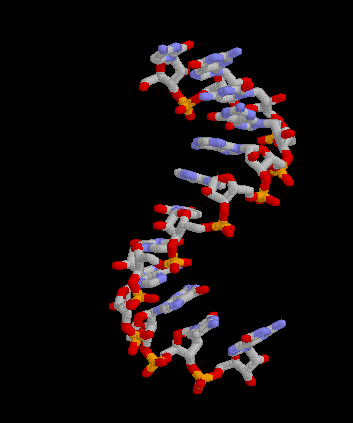
Living beings are open systems that already exchange matter and energy with the environment; they incorporate water, oxygen and nutrients, and remove carbon dioxide and other wastes, as well as energy, in the form of heat. This is how they carry out their vital functions: they nourish, breathe, eliminate waste, transport materials inside them: they develop their metabolism.
In this way they self-regulate and maintain the conditions of their internal environment or homeostasis while relating to the environment, respond to its changes and modify their environment; they are able to reproduce and change over time, evolve.

The origin of the first cells
The hypothesis of panspermia states that the first living beings on Earth arose from spores that came from space, in comets and meteorites.
Panspermia explains the appearance of life on Earth, but it does not solve the initial problem of how life originated: it is limited to transferring the problem to another place.
The hypotheses that life originated on our planet argue that it would have arisen from inert chemicals, in the conditions that would have prevailed on primitive Earth. This phenomenon is called abiogenesis.
The hypothesis of spontaneous generation proposed that life arises spontaneously from inert substances, contrary to the idea of biogenesis, which maintains that living beings always originate from other living beings, through the mechanisms of reproduction. In 1864, the Frenchman Louis Pasteur proved that the microorganisms originated from other microorganisms. Since then, biogenesis was definitively accepted and the hypothesis of spontaneous generation was discarded.

Oparin and Haldane's theory
In the 1920s, the Russian biochemist Alexander Oparin and the English biologist John B. Haldane formulated the physicochemical hypothesis describing how life on Earth could have originated from inert compounds.
For Oparin, organic molecules formed in the primitive Earth's atmosphere that lacked oxygen and ozone.
The absence of ozone in the primitive atmosphere would have allowed large amounts of radiation to reach the Earth's surface. This radiation provided the energy necessary for the appearance of the first organic molecules from compounds such as methane, ammonia, hydrogen... present in the primitive atmosphere. This is called chemical evolution.
Simple organic molecules would have accumulated in the oceans of those times and formed what Oparin called primitive broth. In it, these molecules would have grouped together and generated more complex molecules, such as lipids and proteins. These combined formed coacervates: globules with a rudimentary membrane that limits them from the outside environment. Coacervates are considered prebiotic (pre-life) forms, from which the first cells would have emerged.
But... What was the earth like when this happened? Earth would have originated about 4.6 billion years ago. In the early days it had intense volcanic activity that caused the accumulation of carbon dioxide, hydrogen, methane, ammonia and sulphur compounds. At the same time, the geysers would have fired steam. All of these gases formed the primitive atmosphere some 4.3 billion years ago. It retained the sun's heat, which increased the temperature of the planet.
That atmosphere had no oxygen and there was no ozone layer. The sun's ultraviolet rays reached directly to the planet's surface, there were violent volcanic eruptions and continuous electric shocks from the constant storms.

The theory that emerged from the cold
Aleksandr Ivanovich Oparin was Russian by birth, a plant physiologist by profession, biochemist by vocation. He was born in 1894 in Uglich. He studied, and then taught, at the University of Moscow. The theory he developed in the 1920s was the seed of today's vision of the origin of life.
When Oparin was a university student, Russian biologists taught that the first living beings had been autotrophic (able to make their own food, such as plants), and had formed spontaneously from coal lumps. To Oparin, who had read and accepted Darwin's Theory of Evolution, the idea did not close him. I couldn't imagine the sudden appearance of a photosynthetic cell from carbon dioxide, nitrogen and water,"Oparin wrote. That is why I came to the conclusion that the organic substances from which the first living beings, organisms that at first were heterotrophic and fed on the organic substances of the environment, should first have emerged through a non-biological process.
On March 3,1922, Oparin presented his position at a meeting of the Russian Botanical Society, of which he was a member. He was listened to and reproved with equal courtesy. It was a theoretical speculation that lacked experimental support.
Without discouraging himself, Oparin wrote a booklet entitled The Origin of Life. With some reluctance, and despite the outright rejection of a scientific referee, the work was published by the publisher El Trabajador Moscovita. It went on sale in November 1923 (although it had an edition date of 1924). Sold well. It soon became a bibliographic rarity. Outside of Russia it was hardly disseminated until 1965.
here I will leave you a video with a more extensive explanation, also wanted to emphasize that these two great characters arose from an initiative leaving calm many minds since their theory were successful by many biologists colleagues experts in the matter I hope that in the following video you have a wide knowledge, thanks steemians.

https://www.livescience.com/13363-7-theories-origin-life.html
https://creation.com/origin-of-life
https://www.britannica.com/topic/life/The-origin-of-life
https://www.lpi.usra.edu/science/kring/epo_web/impact_cratering/origin_of_life/index.html